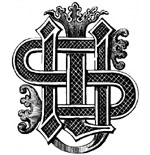
History Never Happened
CULTURAL COUNTERPOINT
Ed. Note: This is the second installment in a three-part series.
A new monument stands in the National Mall in Washington, D.C. A Soldier’s Journey, sculpted by Sabin Howard, is a 58-foot-long saga in undulating bronze. The sculpture follows one American soldier, along with some compatriots, as he fights through the battles of World War I.
Were we to judge solely by the artwork, or by the biblically toned words at its unveiling ceremony about the “sacrifice” of those who laid down their lives for others more than a century ago, we could easily believe that the Odyssean narrative Howard delivers is the truth about the Great War. He describes the monument as embodying “the grand symbolic story of the nation,” and he is hardly alone in that assessment. The patriotic pageantry festooning its bequeathal to the American public, and the enthusiastic reviews of Howard’s work by art critics and political pundits, suggest that many carry the contours of that same story in their hearts and minds. World War I had meaning, and we as a nation grew in stature and significance by taking part in it.
And yet, despite — and because of — the monument’s artistic triumph, those who view it as a representation of past events would be shocked could they go back in time to join the anonymous soldier on his “journey” across the hellscape of Western Europe. The fighting was typified, many firsthand accounts tell us, by mud, rats, lice, poison gas, rotting bodies, sleep deprivation, the fragging of officers, mental breakdowns, idiotic generals, and horrific cruelty toward war animals such as horses, donkeys, and dogs. Prostitution was rampant. So was rape. The Odyssean American soldier depicted in hard metal on the National Mall would, in the flesh, likely have been scourged by some combination of venereal disease, chemical weapons, bullets, bayonets, gangrene, trench foot, high explosives, and psychological torment. He almost certainly would have found unconvincing whatever rationale was offered him as to why he was in a ditch in France with artillery shells exploding all around him and dead comrades staring vacantly into the sky.
It wasn’t just the First World War that was meaningless in the moment. Veterans of virtually any campaign anywhere report that all they wanted to do was survive the fighting and get back home. That the journeying soldier depicted in the National Mall monument could not go home as he wished — that is, that he was Odyssean in the first place — was because the government that sent him to Europe would not allow him to escape the misery to which it subjected him in the name of political maneuvering and geopolitical aggrandizement. The soldiers who bled to death or were blasted to pieces were part of no grand Hegelian process. They were the pawns of schemers in national capitals. There was no need for the United States to be involved in World War I from the standpoint of national security. It was a useless and pointless waste of lives and money.
You May Also Enjoy
I contend that the state in 2020 has been so corrupted by institutionalized murder that it has no authority to carry out executions of anyone.
The sexbot is a tool that uses us and mocks our weakness. It is a vision of Hell: inhuman, ruthless, mendacious, comfortless, and cold.
Fr. Hesburgh proved to be a perfect avatar for the Notre Dame he created: an endorser of some kind of vaguely conceived “natural religion.”

